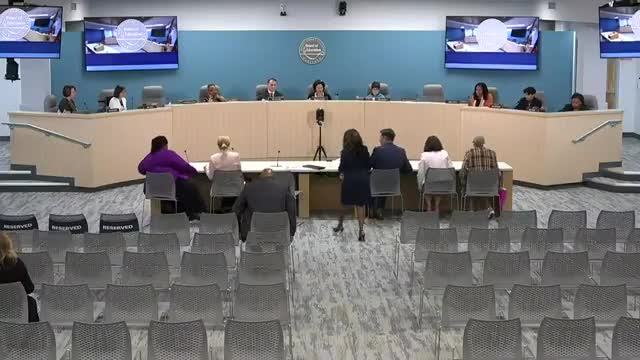Montgomery County schools unveil ambitious literacy improvement plan
September 14, 2024 | Montgomery County Public Schools, School Boards, Maryland
This article was created by AI summarizing key points discussed. AI makes mistakes, so for full details and context, please refer to the video of the full meeting. Please report any errors so we can fix them. Report an error »

During a recent board meeting, Montgomery County Public Schools (MCPS) officials presented a comprehensive overview of student literacy performance, highlighting both achievements and ongoing challenges. Dr. Taylor initiated the discussion by outlining the district's instructional priorities for literacy, which include the implementation of the new elementary English language arts curriculum, Amplify Core Knowledge Language Arts, grounded in the science of reading. At the secondary level, the focus is on school-wide literacy strategies to help students engage with complex texts across all subjects.
The presentation featured data from the Dynamic Indicators of Basic Early Literacy Skills (DIBELS) for grades K-2 and the Maryland Comprehensive Assessment Program (MCAP) for grades 3, 6, and 10. Notably, the board did not receive data on students in specific service groups, which will be addressed in a future presentation.
Dr. Peggy Pugh, the chief academic officer, emphasized the importance of understanding the data to inform instructional practices. She noted that while MCPS students outperformed their peers statewide, there remains a commitment to improving literacy outcomes. The Maryland State Board has set ambitious proficiency goals for the 2024-2025 school year, aiming for 52% of students in grades 3-8 to achieve proficiency, with a subsequent goal of 57%.
The data revealed that last year, 54.2% of MCPS students in grades 3-8 met the state’s proficiency goal, indicating a slight decline from previous years. Disparities in performance among racial and ethnic groups were also highlighted, with white and Asian students achieving proficiency rates above 85%, while Black or African American and Hispanic or Latino students lagged at 62% and 54%, respectively.
The presentation underscored the need for continuous improvement and targeted interventions, particularly for students who are close to meeting proficiency standards. For instance, in grade 3, 54.9% of students were proficient, a slight decrease from the previous year, but many students were just a few correct answers away from achieving proficiency.
Overall, the meeting reinforced the district's commitment to enhancing literacy education through high-quality instructional materials and ongoing professional development for educators, with the goal of ensuring all students have the opportunity to succeed. The next steps will involve further analysis of the data and the implementation of strategies aimed at closing the achievement gaps identified in the report.
The presentation featured data from the Dynamic Indicators of Basic Early Literacy Skills (DIBELS) for grades K-2 and the Maryland Comprehensive Assessment Program (MCAP) for grades 3, 6, and 10. Notably, the board did not receive data on students in specific service groups, which will be addressed in a future presentation.
Dr. Peggy Pugh, the chief academic officer, emphasized the importance of understanding the data to inform instructional practices. She noted that while MCPS students outperformed their peers statewide, there remains a commitment to improving literacy outcomes. The Maryland State Board has set ambitious proficiency goals for the 2024-2025 school year, aiming for 52% of students in grades 3-8 to achieve proficiency, with a subsequent goal of 57%.
The data revealed that last year, 54.2% of MCPS students in grades 3-8 met the state’s proficiency goal, indicating a slight decline from previous years. Disparities in performance among racial and ethnic groups were also highlighted, with white and Asian students achieving proficiency rates above 85%, while Black or African American and Hispanic or Latino students lagged at 62% and 54%, respectively.
The presentation underscored the need for continuous improvement and targeted interventions, particularly for students who are close to meeting proficiency standards. For instance, in grade 3, 54.9% of students were proficient, a slight decrease from the previous year, but many students were just a few correct answers away from achieving proficiency.
Overall, the meeting reinforced the district's commitment to enhancing literacy education through high-quality instructional materials and ongoing professional development for educators, with the goal of ensuring all students have the opportunity to succeed. The next steps will involve further analysis of the data and the implementation of strategies aimed at closing the achievement gaps identified in the report.
View full meeting
This article is based on a recent meeting—watch the full video and explore the complete transcript for deeper insights into the discussion.
View full meeting
